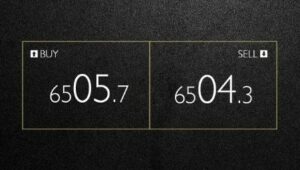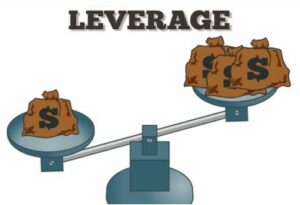Trading Forex
When considering trading, it’s a choice you might have to make depending on which currency pairs your broker chooses to offer. Ultimately, the option is up to you, although when you trad in each different category of currency pairs, there are a few crucial points to note.
The first of those is the cost of trade. As mentioned above, you will find that a major currency pair’s trading costs are generally much lower than an exotic pair’s, and slightly lower than a minor pair. If that cost is a concern, be sure to factor it into your business, and always double-check the spreads before you place your business. The EUR / USD pair is the most frequently traded currency pair on the market as a point of interest, and often offers the lowest spread depending on your broker.
The second thought you should make is to think about market volatility. The lesser traded currency pairs, and exotic currencies in particular, can typically suffer from sudden and sharp swings. This is due in part to smaller traded volumes. No matter how much you prepare, how well your trading plan has been developed and how smart your strategy is – the forex market can turn against you at any time.Forex trading is a risky business, but the potential opportunities make it irresistible. These major forex orders can help you stop the unpredictable. Even with all the safety measures, the risk of losing it all is still there. Learn something from every position you open and every result you get. Great trading opportunities always wait for you!
Buy & Sell
You can see the bid and ask prices for a currency pair on your trading platform and you’ll notice that they are never the same; the ask price is always a little higher than the bid price. You’ll pay the ask price if you’re buying the currency pair, and you’ll receive the bid price if you are selling the currency pair. The difference between the bid and the ask price is called the spread. The bid-ask spread amount goes to pay several fees in addition to the broker’s commission.
Remember, years ago, when you were going on holiday, and you would go to the commission shop. The dealer would change your currency into the currency of the country you were visiting, and he would charge you a commission regardless of the volume of the currency you were exchanging. Today when you go to that same shop, he posts on the wall the price he is willing to buy your currency or sell your currency. The difference is known as the spread the dealer no longer charges you a commission on your transaction.

The term bid and ask refers to the best possible price that buyers and sellers in the marketplace are willing to transact. In other words, bid and ask refers to the best price at which a security can be sold and bought at the current time.
Bid and ask is an incredibly important concept that many retail investors ignore when placing an order. It is important to note that the current stock price is the price of the last trade – a historical price. On the other hand, the bid and ask are the prices that buyers and sellers are willing to trade. In essence, the bid represents the demand while ask represents the supply of the asset.
Spread
The difference between the bid and ask is referred to as the spread. The bid-ask spread benefits the market maker and represents the market maker’s profit. It is an essential factor to take into consideration when trading currencies, as it is essentially a cost that is incurred during trading.
You must pay the spread when trading CFDs, which is the difference between purchase price and sell price. Using the quoted purchase price you enter a buy trade and exit using the sell price. The narrower the spread, the less you need the price to move in your favour, before you start making a profit, or a loss if the price moves against you. We consistently offer competitive spreads.
Pips
Exchange rates are quoted to at least four decimal places, and the smallest unit— equivalent to 1/10000th of one unit of currency—is referred to as a PIP, which is short for percentage in point. Forex traders will typically brag about how many PIPs they cleared on a trade, which is just another way of accounting for how much profit they earned.
Many forex combinations will move about 50 to 100 pips per day. A pip or a Point in Percentage is the name used to indicate the fourth decimal place in a currency pair, or the second decimal place when JPY is in the pair. When the price of the EUR/USD moves from 1.1900 to 1.1950, that’s a 50-pip move; if you bought the pair at 1.1900 and sold it at 1.1950, you’d make a 50-pip profit. The profit you made on the above hypothetical trade depends on how much of the currency you purchased. If you bought 1,000 units in USD, each pip is worth $0.10, so you would calculate your profit as 50 pips x $0.10 = $5 for a 50-pip gain
Lot sizes
Currencies tend to trade in lots of 100,000, which is unaffordable and unattractive for most retail traders. As a result, all brokers offer the ability to trade on margin. In a nutshell, this means that you can plunk down as little as $2,000 for a $100,000 trade. Of course, with the potential for outsized profits comes the risk of massive losses. This is also a significant advantage to CFD forex trading, where there are flexible lot sizes.
Leverage
If you are new to forex trading, then you need to know precisely what is meant by leverage and margin, how you can utilize it, and what kind is available from your forex broker. Since every top forex broker around the world offers some sort of leverage, it is essential to understand the concept and the benefits and risk of leverage.

In its most simplistic form, leverage is simply money borrowed from a source that can increase the size of the position or amount of capital that is available to you. In this case, the basis that you are borrowing money from in the form of leverage is your broker. The amount of leverage available is not based on your account or your experience. Every trader is offered the same leverage, but different regions, countries, and regulators allow brokers to provide additional leverage within the EU. Under the regulations of ESMA (European Securities and Markets Authority), all brokers are limited to offering a maximum leverage of 30:1, regardless of the market traded. Effectively , this means you can only borrow up to 30 times your equity to trade with. The idea here is to protect traders from becoming too involved in leveraged trading where losses can quickly mount.
This is typically more than enough leverage and is usually only available within the major forex currency markets, which are often viewed as less volatile. With a 30:1 leverage and a deposit of $100, you could hypothetically open positions to the value of $3,000.
CFDs are a leveraged product, meaning you only need to deposit a small percentage of the trade’s full value to open up a position. This is called ‘margin trading’ or requirement for margin. While margin trading allows you to magnify your returns, your losses are also magnified because they are based on the full value of the CFD position, which means you could lose more than any deposited capital.
- How to Make Money Trading Forex with No Previous Experience - September 23, 2020
- Free Trading Training – Master the Online Trading World - September 22, 2020
- How Much Money Do Forex Traders Make Per Day? - September 22, 2020
